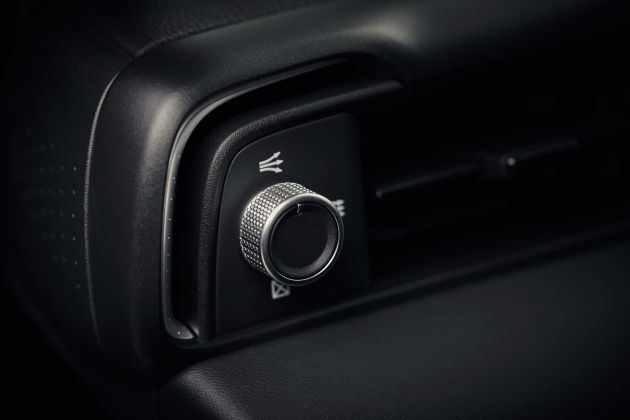Honda Europe is continuing its deep dive of the new third-generation HR-V ahead of the car going on sale in the continent at the end of the year. This time, the company is taking a look at the features designed to improve the interior comfort of the B-segment crossover, including the new Air Diffusion System.
That’s the name given to the car’s unique L-shaped air vents at the corners of the dashboard, which can be used to direct air along the sides and roof of the car, rather than directly at the occupants’ faces. The resulting “curtain” is said to mimic a natural breeze, gently brushing the cheeks of the driver and passenger.
The airflow also acts as an insulator of sorts, blocking the heat coming through the side windows in the summer as well as the cold of the winter. Users can switch back to a normal forwards-directed blast via the large control knob adjacent to the vents. Rear passengers also benefit from new vents located behind the centre front armrest, a first for the HR-V.
Continuing with the interior concept of “light and wind”, the windows have been designed to allow as much light as possible into the cabin. Outward visibility has been improved through the flat bonnet and clear sightlines, allowing the driver to place the car accurately on the road.
Honda has also focused on the optimal positioning of the controls, the uncluttered layout of which is said to impart a sense of calm. The audio and ventilation controls have been positioned as close as possible to the driver’s line of sight and have been designed to be instantly recognisable, making them safe and intuitive to operate while driving.
The company’s “Man-Maximum, Machine-Minimum” development principle comes to the fore in the HR-V, with the powertrain and drivetrain components all packaged within the chassis and engine bay. This, together with the positioning of the fuel tank beneath the front seats, maximises interior space while allowing for a more “premium” design on the outside.


Making use of the increased interior dimensions, engineers positioned the rear seats 30 mm further back and increased the recline by two degrees. Honda is claiming headroom that is comparable to the class standard but a 35 mm increase in leg- and shoulder room, said to be comparable to SUVs one class up.
Further improvements in comfort include “body-stabilising” front seats, which utilise a mat structure instead of springs for support. This helps increase comfort in everyday use and prevent fatigue on long journeys.
The HR-V will be offered in Europe in e:HEV hybrid form only, utilising a 131 PS/253 Nm electric motor and a 108 PS/127 Nm 1.5 litre Atkinson-cycle i-VTEC engine – the latter charges the battery and helps provide motive power at higher speeds. The car is already on sale in Japan, where it continues to be sold as the Vezel and is offered with an additional 118 PS/142 Nm 1.5 litre petrol variant, fitted with a CVT.















The post 2022 Honda HR-V – new Air Diffusion System detailed appeared first on Paul Tan's Automotive News.



0 Comments